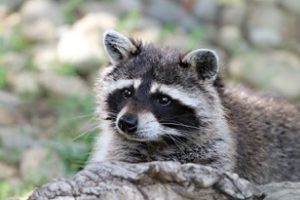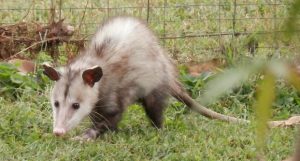Rodents
RODENT CONTROL MIAMI
At Monster Pest Control, we intend to make you feel secure by protecting your home or business from rodents. We are licensed, certified, responsible and specialists in rodent control, rat control and mice control in Miami. Learn more about the different types of rodents found in South Florida.
Raccoons
 Raccoons are about the size of a small dog and are most noted for their black mask and bushy ringed tail. Most raccoons weigh 8-15 pounds.
Raccoons are about the size of a small dog and are most noted for their black mask and bushy ringed tail. Most raccoons weigh 8-15 pounds.
Raccoons are common throughout the state and occur everywhere there are trees offering the cavities they often use. They also tend to stay near a reliable source of water and are commonly found in urban areas.
Raccoons are amongst the most intelligent of Florida’s wildlife. They feed on fruits, plant material, eggs, crustaceans, small animals, and even garbage. They usually become active in the late afternoon and throughout the night, but may change this pattern according to food availability.
Raccoons are beneficial because they control populations of insects, rodents and other animals. It is best to prevent problems with raccoons by securing attractants and deterring them from denning in residences. Removing one or more raccoons does not prevent others from moving into or using the same areas in the future. However, if a
A raccoon is a nuisance, the animal can be captured or taken as a nuisance animal using legal and humane methods.
Norway Rat
 Adult Norway rats weigh an average of 1 pound. Their fur is coarse and usually brownish or reddish gray above and whitish gray on the belly.
Adult Norway rats weigh an average of 1 pound. Their fur is coarse and usually brownish or reddish gray above and whitish gray on the belly.
Norway rats live in close association with people. In urban or suburban areas they live in and around residences, in cellars, warehouses, stores, slaughterhouses, docks, and in sewers. On farms they may inhabit barns, granaries, livestock buildings, silos, and kennels.They may burrow to make nests under buildings and other structures, beneath concrete slabs, along stream banks, around ponds, in garbage dumps, and at other locations where suitable food, water, and shelter are present. Although they can climb, Norway rats tend to inhabit the lower floors of multistory buildings.
Norway rats will eat nearly any type of food. When given a choice, they select a nutritionally balanced diet, choosing fresh, wholesome items over stale or contaminated foods. They prefer cereal grains, meats and fish, nuts, and some types of fruit.
Females may come into heat every 4 or 5 days, and they may mate within a day or two after a litter is born. Breeding often peaks in spring and fall, with reproductive activity declining during the heat of summer and often stopping completely in winter, depending on habitat. These seasonal trends are most pronounced in more severe climates. The average female rat has 4 to 6 litters per year and may successfully wean 20 or more offspring annually.
Droppings may be found along runways, in feeding areas, and near shelter. They may be as large as 3/4 inch long and 1/4 inch in diameter. These Rats memorize pathways and use the same routes habitually.
House Mouse
 House mice are small rodents with relatively large ears and small, black eyes. They weigh about 1/2 ounce and usually are light brownish to gray. An adult is about 5 to 7 inches long, including the 3- to 4-inch tail.
House mice are small rodents with relatively large ears and small, black eyes. They weigh about 1/2 ounce and usually are light brownish to gray. An adult is about 5 to 7 inches long, including the 3- to 4-inch tail.
Although house mice usually prefer to eat cereal grains, they are nibblers and will sample many different foods. Mice have keen senses of taste, hearing, smell, and touch. They also are excellent climbers and can run up any rough vertical surface.
In a single year, a female may have 5 to 10 litters of about 5 or 6 young. Young are born 19 to 21 days after conception, and they reach reproductive maturity in 6 to 10 weeks. The life span of a mouse is usually 9 to 12 months.
Because house mice are so small, they can gain entry into homes and other buildings much more easily than rats.
Roof Rat
 This rat is the same species that carried the bubonic plague around the world and is also the reservoir host for murine typhus. Roof rats are the worst rodent pest in the state of Florida and most abundant. Roof rats consume and destroy stored animal and human food, attack fruit crops, and take up residence in attics, soffits, hollow walls, and out-buildings. When they invade buildings they chew through wires (potentially starting fires), gnaw through plastic and lead water pipes, make holes in walls, and cause other structural damage.
This rat is the same species that carried the bubonic plague around the world and is also the reservoir host for murine typhus. Roof rats are the worst rodent pest in the state of Florida and most abundant. Roof rats consume and destroy stored animal and human food, attack fruit crops, and take up residence in attics, soffits, hollow walls, and out-buildings. When they invade buildings they chew through wires (potentially starting fires), gnaw through plastic and lead water pipes, make holes in walls, and cause other structural damage.
They then make their presence known with a vengeance. In citrus, papaya, cantaloupe, and watermelon the characteristic damage is a circular hole about the size of a quarter or half dollar and the whole fruit hollowed out
Adult roof rats are 12-14 inches long and weigh 5-10oz. The tail of a roof rat is longer than the head and body length: hairless, scaly, and black color. The body is sleek and graceful with prominent ears and eyes . There are three color phases seen in Florida: black back with a slate gray belly, gray back with lighter gray belly, and brownish gray above with a white or cream colored belly.
Roof rats are omnivores (plant- and animal-eating) but are very fond of fruit. They feed on most cultivated fruits and eat many native fruits and nuts. They also feed on livestock feed, pet food, bird seed in feeders, and garbage. They contaminate and damage much more than they actually eat.
Roof rats reach sexual maturity at 3 to 4 months of age. In Florida, they breed year-round, with peak breeding activity in spring and fall. The litter of 5 to 8 pups are born after a gestation period of 21 to 23 days. A female roof rat can have 4 or 5 litters per year. You need a rat removal Miami expert to properly remove a roof rat from your home or business.
Opossum
 Opossums have grayish-white fur and are about the size of a house cat. They have long naked tails, small naked ears, and a pointed snout.
Opossums have grayish-white fur and are about the size of a house cat. They have long naked tails, small naked ears, and a pointed snout.
Opossums prefer woodlands with lots of cover and nearby water. They are also common in urban areas, as they are attracted to almost any type of available food, including garbage, pet food, or cultivated fruits and vegetables.
Opossums are skilled climbers, often seen in trees and on the tops of fences. Females produce at least 2 litters a year. After gestation, the 7 to 11 young crawl into the female’s pouch where they can nurse.
Opossums are scavengers, and they often visit human homes or settlements to raid garbage cans, dumpsters, and other containers. They are attracted to carrion and can often be spotted near roadkill. Opossums also eat grass, nuts, and fruit. They will hunt mice, birds, insects, worms, snakes, and even chickens.
When threatened by dogs, foxes, or bobcats, opossums sometimes flop onto their sides and lie on the ground with their eyes closed or staring fixedly into space. They extend their tongues and generally appear to be dead. This ploy may put a predator off its guard and allow the opossum an opportunity to make its escape.
Opossums nest in tree holes or in dens made by other animals.
Contact us at 786-488-7235 for a FREE Quote from your rodent removal Miami experts! Our technicians will provide you with informative procedures to better understand our Miami rodents.

 Free Estimate:
Free Estimate: 
